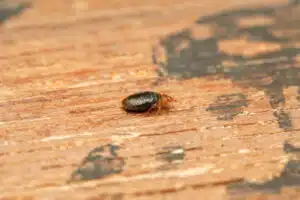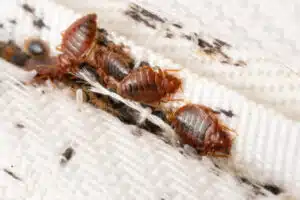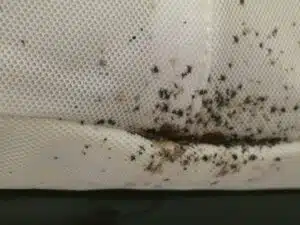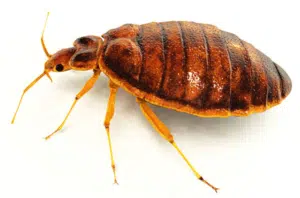What are Barn Spiders?
What are Barn Spiders? Is it a Good or Bad Sign to See One?
We all know that spiders are crawly creatures that can give us creeps. They’re not everyone’s favorite creature, that’s for sure. What about barn spiders? Are they different from other spiders? Are they good or bad signs to see around your property? In this blog post, we will answer these questions and more.
What are Barn Spiders?
The Barn spider is a nocturnal species indigenous to North America, mostly found during late summers and throughout autumn. They are a member of the Araneidae family and are also commonly known as the orb-weaving spiders, which has around 200 species in North America alone.
What do Barn Spiders Look Like?
Barn spiders are fascinating creatures that live in downspouts, drains, and other areas where there’s debris. They are generally yellow and brown, with striped legs. However, their undersides can be black or white depending on their genetic makeup, which gives them an even more distinct appearance.
Barn spiders range in size from 3/4″, however they can grow up to 1 inch long. The males are much smaller, measuring only 1/4 inch long, while female barn spiders can be twice their size.
One of the most distinctive features of the barn spider is its large, segmented abdomen covered with tiny hair. This feature allows them to easily camouflage themselves since they tend to build their webs near woodpiles, buildings, and other structures.
What do Barn Spiders Eat?
These spiders are opportunistic hunters, meaning they will prey on whatever insects are available. Cockroaches, beetles, flies, and moths are all common targets for barn spiders. Barn spiders construct large webs, typically two to three feet in diameter, with a funnel-like shape. These webs serve as a hunting ground and a home for the spider. The barn spider quickly moves in for the kill when an insect becomes entangled in the web.
Do Barn Spiders Bite?
Barn spiders are shy and docile animals that will only bite humans when threatened or handled unexpectedly. Their bites may or may not be venomous, and their venom is non-toxic to humans. However, it all depends on the reaction of the person who got bit. Some people might have a stronger reaction than others, so it’s best to avoid getting bitten by these creatures altogether.
Are Barn Spiders Good or Bad?
The barn spider is a common arachnid found on farms and other rural areas. Like other spider species, these spiders are generally harmless to humans and can even be beneficial. For example, they help keep populations of harmful insects in check as they prey on insects that are harmful to crops. However, barn spiders can become a nuisance if they build their webs in areas where they are not welcome, such as barns or sheds. In addition, these spiders are sometimes mistaken for the more dangerous black widow spider, which can cause serious health problems in humans. For this reason, it is important to identify barn spiders and know how to safely remove them from your property if necessary.
How to Get Rid of Barn Spiders?
If you want to get rid of barn spiders, the best thing to do is to contact a professional pest control company. They will be able to safely and effectively remove these creatures from your property. In addition, they can also help you to prevent barn spiders from returning in the future.
However, if you prefer to do things yourself, there are a few things that you can do to get rid of barn spiders. One option is to use a vacuum cleaner to remove these creatures from your home. Another option is to use a mixture of water and vinegar to kill them. You can also try using essential oils such as eucalyptus or tea tree oil to repel these creatures. Finally, you can also try to remove them manually by using a stick or other object to carefully remove them from their webs.
Related Articles

Tick vs. Bed Bugs: Differences and Similarities
Understanding the differences between two common blood-sucking pests, ticks and bed bugs, is important. We want to make sure you know exactly what kind of pests you’re dealing with,

Where Do Bed Bugs Come From, and How to Prevent Them? A Guide for Salt Lake Residents
Bed bugs can be a major nuisance and cause various physical and emotional problems, including skin irritation, anxiety, and sleep disturbances. In Salt Lake City, bed bugs are a growing concern, especially in apartment buildings, hotels, and other high-density living spaces. But where do bed bugs come from, and how can you prevent them from infesting your home or property?

Are All the Tiny Black Bugs in My Bed Bed Bugs?
Sleeping is one of the things that we look forward to after a very long day. We recharge ourselves by sleeping by the end of the night to be refreshed the next day. But we can be disturbed even during our sleep by pesky pests crawling and hiding where we sleep. That’s terrifying, right? Pests that are known to annoy us during our sleep are bed bugs. They are usually found where humans and other pets sleep. Bed bugs can be almost anywhere in the world – even in your Saltlake home! They can be annoying because they suck your blood and leave you with an itch and bumps in the infected area. So blood attracts them, even the blood of other animals. Therefore, you should conduct bed bug removal if you have them. If you find bugs on your beds, you might think they are bed bugs. But are they?

Can Bed Bugs Live in Your Car?
Bed bugs are small, flat, and oval-shaped insects that feed on the blood of humans and animals. During the day, bed bugs hide in cracks and crevices around beds, furniture, and baseboards. You can also find them in mattresses, bed frames, blankets, carpets, and other fabric items throughout your home. While it is possible for bed bugs to infest your car, they’re less likely to do so than inside a house or other structure.

How to Find Bed Bugs in Your Home
Bed bugs are small, blood-sucking that feed on human and animal blood. They belong to the family Cimicidae, contain over 100 species, and have been around for millions of years.

Can Bed Bugs Jump?
Bed bugs are a common household pest that can be difficult to get rid of. These tiny insects can live in any crevice or crack in your home and feed on blood.
